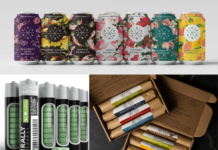
Most of the food businesses who come to us do so because they want to grow to profitability but don’t know how, exactly. While we work with businesses on a plethora of things from their accounting to how to raise equity, we often work on “the fundamentals” of their business model first, since the fundamental drivers of how the business makes money sustainably, at scale, lie in the model.
What often focuses our conversations with the client about their model is their path i.e. where their model will lead their business in the future. If they want to be a wholesale brand only, this usually necessitates an investor-funded rapid growth path with an eventual sale of the company to repay investors. If they want to stay local, there are paths that can make that work, usually involving some sort of retail or direct-to-consumer component, but they have very specific requirements and often have limited growth potential. Both paths are “OK” as long as the entrepreneur has defined their business model well enough that they know what path they are on and how to best finance it.
A path that often doesn’t get as much attention as (we think) it deserves are models that diversify the business, like allowing for horizontal growth, which, in addition to taking some of the risk out of the new business startup process, allows for financing of the related business separately. On our podcast this week, Jason Schleip talks about his experience building a restaurant and then growing his business’ revenue by turning it into a franchise. Essentially, by helping other interested parties expand his restaurant concept to new markets, he was helping other aspiring entrepreneurs open restaurants with the risk reduced for the franchisee and many of their processes/brand elements figured out while creating a nice recurring revenue source for his company. Other models include horizontally integrated local food companies that reach financial sustainability in a local market by developing a series of interrelated but distinct food businesses that share common a common brand, administrative services and marketing. Zingerman’s is a classic example of a horizontally integrated company of diverse business types.
The answer to “where is your growth path” lies in the company’s business model and their willingness to find creative solutions to how they can grow their unique brand and strengths. No path is easy, but we encourage entrepreneurs to consider creative ways they could grow, including horizontally, to reach profitability and sustainability.
And now, our roundup of the best food and beverage finance news, events and resources from around the web…
Business Model Insights
- What to Consider When a Young Business Grows Quickly (Investors Community Bank) – “The costs of running a new business can be difficult to manage, especially coming on the heels of any cash spent to open the business. At this early stage, the company may be relying heavily on credit as they try to grow revenue and manage expenses. Rapid growth is encouraging but requires more supplies and more labor. These important expenses require more cash, often during a time when the company does not yet have excess cash on hand. If everything goes according to the business plan, this isn’t an unmanageable problem; however, rarely do things go according to plan.”
- 6 red flags when vetting contract manufacturers (New Hope Network)
- 7 tips to plan for better financials (New Hope Network)
 Raising Capital
Raising Capital
- Equity-based crowdfunding for foodies 101 (New Hope Network) – “Thanks to a game-changing federal law, a different kind of crowdfunding has emerged: equity-based. Instead of offering rewards in exchange for funds, equity-based crowdfunding guarantees each investor an actual stake in the company, proportional to their investment. While these sites all have their own terms, fee structures and nuances, they generally follow one of two tracts of equity-based crowdfunding: Title II crowdfunding, which means only accredited investors can participate, or Title III crowdfunding, also called regulation crowdfunding, which welcomes anybody to invest.”
- 5 factors to consider before seeking VC funding (New Hope Network)
- From Renters Threatened with Eviction to Stable Building Owners, LoCoco’s Thrives Following SBA 504 Loan (TMC Financing)
CPG/National Brands
- Who Is Your Shopper? Decoding the Panel Data “Demographic” Report (CPG Data Tip Sheet) – “Marketers need to paint a picture of their buyers, humanizing them and understanding their preferences. This is not only important for general messaging but also necessary for target marketing. Syndicated household and shopper panel data is an excellent tool for helping to understand consumer characteristics. Why use panel data versus survey research for understanding the consumer? Because: 1) Panel data allows you to quickly hone in on a particular group, based on their known buying behavior, and because it’s syndicated, panel data is always there, ready for you to tap into it.”
- Growth Hacking in an Omnichannel World (TIG Brands)
- Rules of the game: Predicting your probability of a successful listing at discounters (Neilsen)
Market Trends
- Why healthy food should also sound tasty (FoodDive) – “Researchers from six U.S. universities and colleges found consumers ate vegetables 29% more often when they had labels based on their taste than when they were labeled based on health attributes. The taste-focused labels also got consumers eating their vegetables 14% more often than with basic labels. The study was conducted across 137,842 diner decisions during 185 days and using 24 types of vegetables at five university dining halls.”
- Our Top 10 Food Trends for 2020 (Whole Foods)
- Study: Consumers remain skeptical about ordering fresh, frozen food online (Refrigerated & Frozen Foods)
 Farming and AgTech
Farming and AgTech
- Farm Credit System Reports Decline in Loan Quality (Successful Farming) – “Although the levels of portfolio credit risk are acceptable, they are rising, and this increase underscores the significant operating challenges facing System borrowers. Amid trade disruptions, production uncertainty, and large global stocks, the Food and Agricultural Policy Research Institute projects crop prices to remain weak. As a net exporter, the U.S. farm sector depends on global demand for its agricultural products. Slower economic growth in key U.S. agricultural export markets is a growing concern.”
- Moving beyond the “us vs. them” of agriculture (AgThentic)
- From the farm to the restaurant, how people are investing in regenerative agriculture (Green Biz)
 Deals/M&A
Deals/M&A
- Why private equity firms are buying food and beverage brands (FoodDive) – “While this explosion of creativity is partially the result of consumer interest, there’s another good reason: investors. These investors make it possible for brands to pay distributors and retailers to get on shelves, to put together marketing campaigns, for more things to happen — without brands needing to be independently wealthy.”
- NCN News October 29, 2019 (Nutrition Capital Network)
- Appetizing investing in unbranded food manufacturers (FoodDive)
 Industry Events
Industry Events
- Rethinking CPG (Food Tech Connect) – $, 11/5 in San Francisco, CA
- Annual Farmer Cooperatives Conference (University of Wisconsin Center For Cooperatives) – $, 11/6 – 11/8 in Minneapolis, MN
- Good Food Financing and Innovation Conference (FamilyFarmed) – $, 11/6 in Chicago, IL
- Business Tax Basics (UW-Madison SBDC) – $, 11/19 in Madison, WI
- Becoming A More Effective Sales Manager In The Natural And Specialty Channel – (Bob Burke Consulting) 12/10 -12/11 in Boston, MA
- Financing Your Consumer Product Company: Natural, Organic, Specialty, Retail & Premium – (Bob Burke Consulting) 12/12 in Boston, MA
- MOSES Conference 2020 (MOSES) – $, 2/27 – 2/29 2020 in La Crosse, WI
- Food System Vision Prize (Rockefeller Foundation) – Free to apply, 1/30 2020 Online
- National Good Food Network Conference 2020 (Wallace Center) – $, 3/10 – 3/13 2020 in New Orleans, LA






